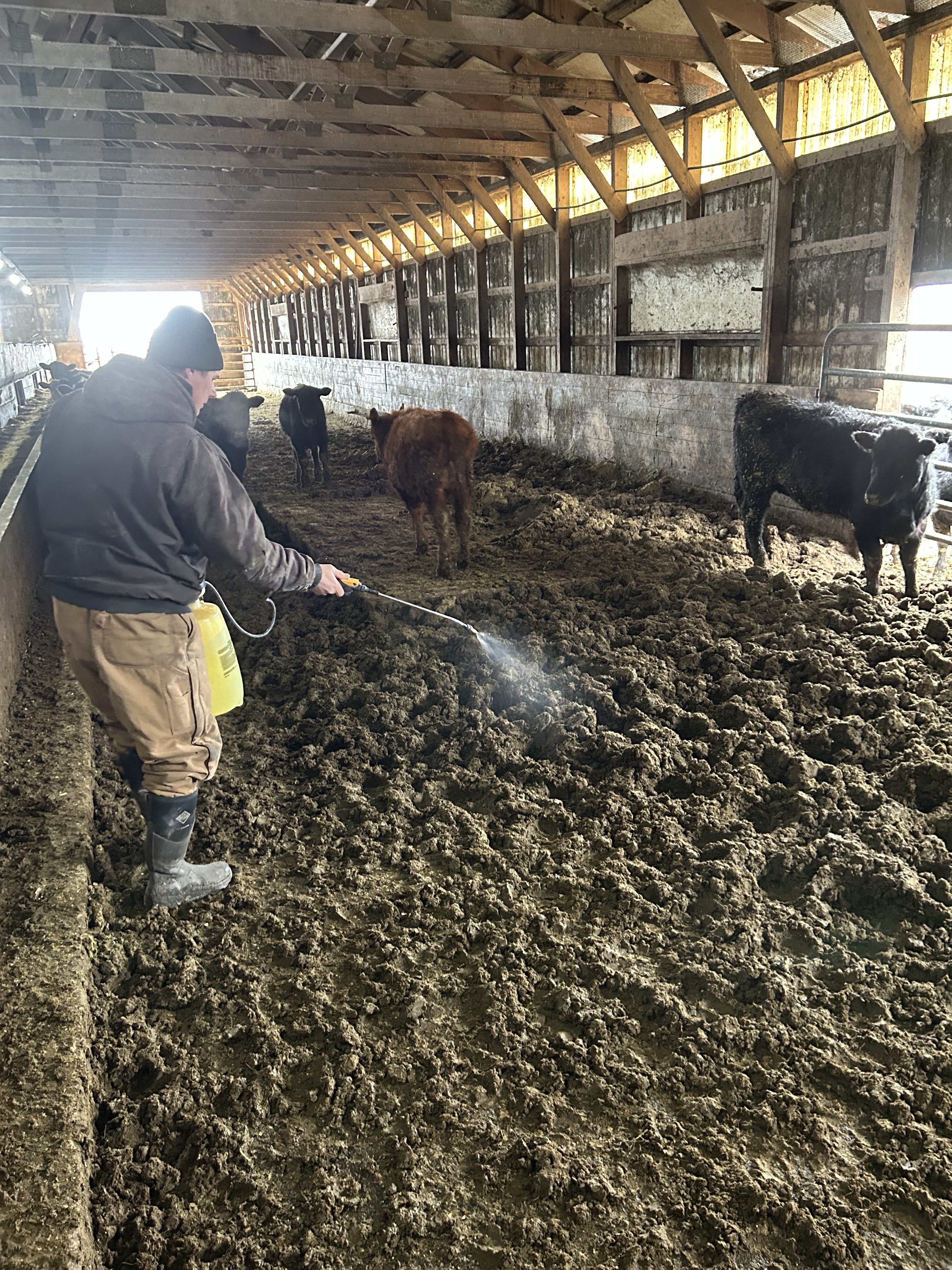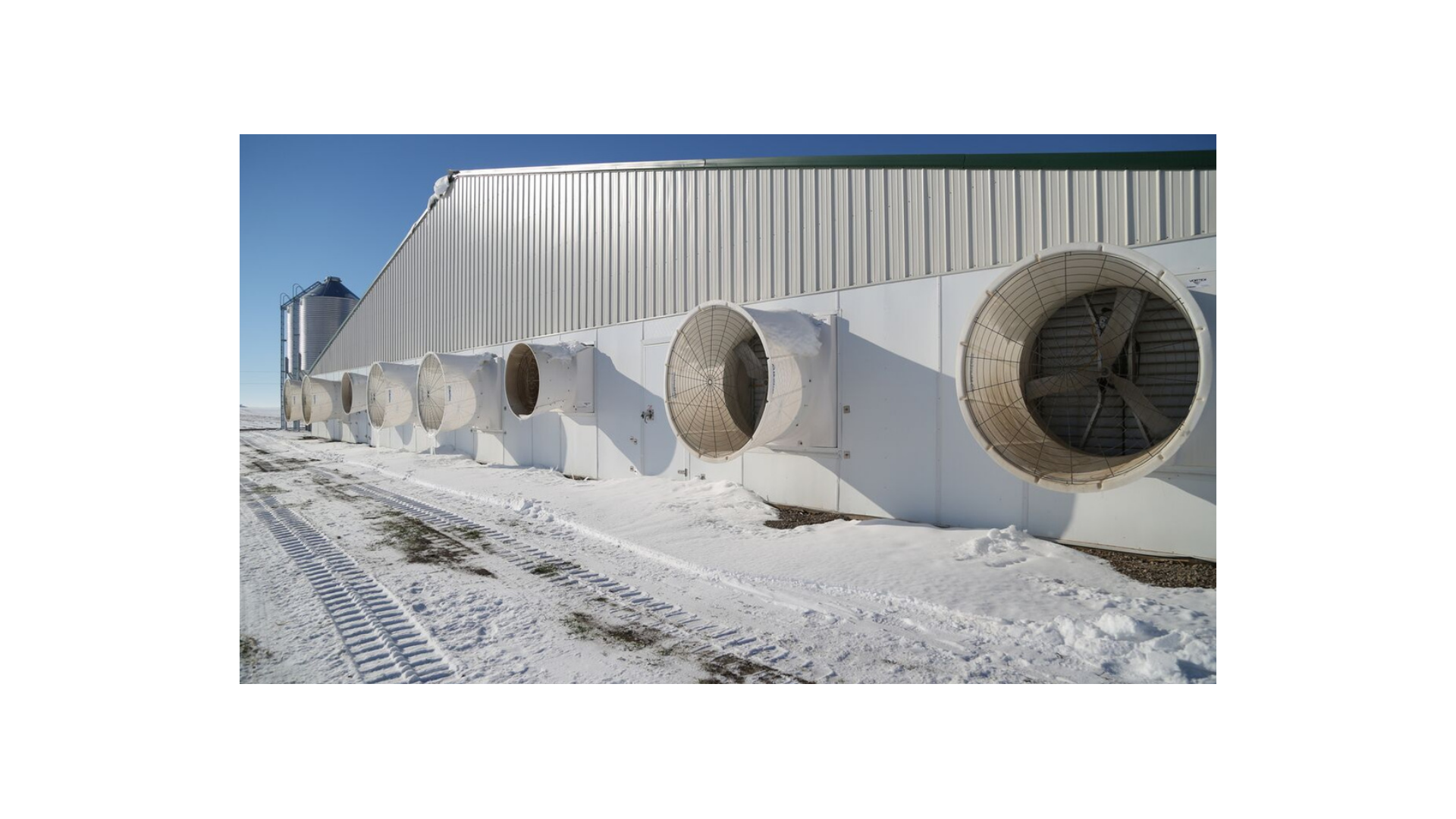The Science
What's working for you...the how and the why.
There's a lot of snake oils out there, but research proves that NGA works.
Ammonia—a sharp, choking gas—is harmful to respiratory systems everywhere. It stinks up barns, irritates animals and laborers, and can trigger regulatory headaches. NGA (Next Gen Animal Agriculture) tackles this head-on with a biologic powerhouse designed to cut NH₃ fast and keep it under control. Here’s how it works, backed by real results.
The Science: Bacteria and Enzymes at Work
The NGA microbial family harnesses a team of select soil bacteria—four key species, hand-picked and carefully tailored—to remediate the manure. When you apply NGA, these dormant spores spring to life, releasing enzymes that break down ammonia-producing waste. There are two versions of NGA: NGA1 and NGA3. For NGA1, an initial localized “alkaline shock” (pH 9.5–11.5 solution microbe hibernation buffer system) jumpstarts this process, boosting microbial activity to attack NH₃ at its source. The alkaline buffer system in the NGA does not alter pit pH due to buffer system design. NGA3 skips the initial localized shock, diving straight into remediation even in high-pH (>8.5) or anaerobic pits—perfect for tough lagoons. Over time, these bacteria stabilize the pit’s pH to a farmer-friendly 6.5–7.5, slashing ammonia release.
Proven Results: Ammonia Down, Air Clear
Farmers see the difference—and studies back it up:
-
Zimmerman Hog Nursery - Iowa 2016: our field rep treated 10 shallow pits with NGA1. In just 2.5 weeks, ammonia dropped to 7 ppm—clean enough to breathe without burning.
-
Beran Cattle Shed - Iowa 2016: A 500-head barn went from “disaster” to “no pit smell” in 6 months after NGA1 treatment—neighbors noticed only pasture whiffs.
-
USDA Backed Study - Missouri 2019: Tested over 4 months, higher NGA1 doses cut NH₃ ppm significantly, while lower rates slowed exhaust versus untreated pits—real science from the University of Missouri.
-
Sutton Lagoon - North Carolina 2016: NGA reduced unavailable nitrogen by 7.3% in 4.7 months, taming ammonia in a tough lagoon setup.
Across the board, NGA delivers—USDA pegs odor reduction at 56–80%, and farmers saw “no strong NH₃” in 6 weeks. Unlike lesser additives, NGA’s biologic punch keeps ammonia low.
Why It Matters
High ammonia isn’t just a smell—it’s a health hazard for livestock, a neighbor complaint magnet, and a safety risk in barns. NGA cuts it naturally—no harsh chemicals—making pits safer, air fresher, and compliance easier. Whether it’s a deep pit or a lagoon, NGA’s got the NH₃ fix.
Hydrogen sulfide (H₂S)—that rotten-egg stench—is more than a nuisance. It’s a toxic gas lurking in manure pits, threatening livestock, workers, and your operation’s peace. NGA steps up with a biologic fix to cut H₂S and keep your farm safer. Here’s how it gets the job done, straight from real-world results.
The Science: Bacteria Take Charge
NGA unleashes a squad of soil bacteria—four specially selected species with DNA trained to tackle tough waste. When NGA hits the pit, these dormant spores wake up, pumping out enzymes that break down sulfur-rich compounds—the culprits behind H₂S. NGA1 kicks off with an “alkaline shock” (pH 9.5–11.5), revving up microbial action to zap gas production, then settles to a steady 6.5–7.5. NGA3 dives in without the shock, thriving in high-pH (>8.5) or anaerobic pits—ideal for lagoons—thanks to its oxygen-support kickstart. This multi-strain team adapts to any manure mess, curbing H₂S at its roots.
Starter enzymes get to work right away, recycling nutrients and stifling gas-forming pathogens, while oxygenation keeps the good bacteria humming. It’s a natural, no-fumes fight against H₂S.
Proven Results: H₂S Tamed
The proof’s in the pits—and the lab:
-
Shelman Hogs - Iowa 2015: After 5 gallons of NGA1, this 1200-head pit lost its “strong” stench in 6 weeks—H₂S faded with the ammonia and foam.
-
USDA Backed Study - Missouri 2019: Over 4 months, the highest NGA1 dose halved H₂S levels compared to controls—though results varied, it’s a solid step down. University of Missouri’s data hints at NGA’s gas-cutting power.
-
Supplier Claim: NGA “controls H₂S, ammonia, and methane”—field success backs this up.
Compared to weaker additives, NGA’s biologic edge shines—ASABE 2017 report saw competitors like Narasin drop methane but not H₂S consistently.
Why It Matters
The Science: Breaking It Down
NGA releases a crew of four elite soil bacteria species, their DNA trained to tackle waste head-on. When you dose your pit, these dormant spores wake up fast, pumping out enzymes that chew through solids—think proteins, fibers, and gunk that pile up. Then short-term oxygenation sources boost their effectiveness. Together, they turn crust into liquid gold.
The enzymes kick things off, recycling nutrients and softening solids early, while oxygen support keeps the bacteria thriving. This multi-strain power adapts to any pit or waste type—cattle, swine, deep, or shallow. No chemicals, just nature’s heavy lifters.
Proven Results: Solids Slashed
Farmers and tests prove it works:
-
Mutterthies Cattle - Iowa 2016: A 60’x290’x14’ pit was half sludge—a big treatment of NGA1 wiped it out in 5 weeks. The field rep dropped a pipe in the pit and hit concrete—no solids left.
-
Vanhove Cattle - Iowa 2016: A 48’x120’x8’ pit had caked walls—NGA1 broke chunks loose in 6 weeks, leaving minimal crust after 10 months.
-
Supplier Claim: NGA cuts solids by 80%—field results match this power.
The 2017 ASABE study saw other products reduce solids over months (VS 2.98% vs. 4.70% control)—NGA outpaces it, often in weeks.
Why It Matters
Solids mean clogged pumps, extra agitation, and wasted time—plus they trap gases like H₂S. NGA breaks them down fast, making waste liquid, pump-ready, and safer. From Iowa pits to North Carolina lagoons, it’s your sludge solution.
Foam in manure pits—those bubbling, gas-trapping mounds—is a silent menace. It steals storage space, hides toxic fumes, and risks deadly flash fires. NGA (Next Gen Animal Agriculture) wipes it out with a biologic punch that’s fast, safe, and proven. Here’s how it stops foam cold.
The Science: Busting Bubbles Naturally
NGA deploys four elite soil bacteria species, their DNA engineered to tackle waste chaos. When NGA hits the pit, these spores wake up, unleashing enzymes that shred foam-feeding solids—proteins and fibers that trap gases like methane and H₂S. NGA1 starts with an “alkaline shock” (pH 9.5–11.5), turbocharging this breakdown before settling to 6.5–7.5. NGA3 skips the shock, diving into high-pH (>8.5) or anaerobic pits with oxygen support—ideal for foamy lagoons. This multi-strain crew adapts to any waste, crushing foam’s foundation.
Short-term plant enzymes jumpstart the process, breaking down nutrients that fuel bubbles, while oxygenation keeps bacteria thriving, not gasping. No chemicals—just nature’s foam fighters.
Proven Results: Foam Gone Fast
-
Turner Hogs - Iowa 2015: A new barn’s foam vanished in 8 weeks with NGA—no solids to hold it.
-
Peiffer Hog Pits 1 & 2 - Iowa 2015: Two deep pits (1200 hogs each) lost foam in 6–7 weeks with 5 gallons of NGA1 each—clean and clear.
-
Supplier Claim: NGA “eliminates cake and foam”—field results back this 100%.
NGA’s speed beats the slow grind of other additives—foam’s history in no time flat.
Why It Matters
Foam traps gases, shrinks pit capacity, and risks explosions—think barn fires or livestock losses (National Pork Board). It’s a headache for pumping too. NGA clears it naturally, freeing space, boosting safety, and easing your load. From pits to lagoons, NGA’s your foam fix.
Stay Up to Date
As new data and research pours in, follow along with every post.
Latest blog posts
Every situation is unique. Read through other posts to see the variety of ways NGA can improve a pit.



